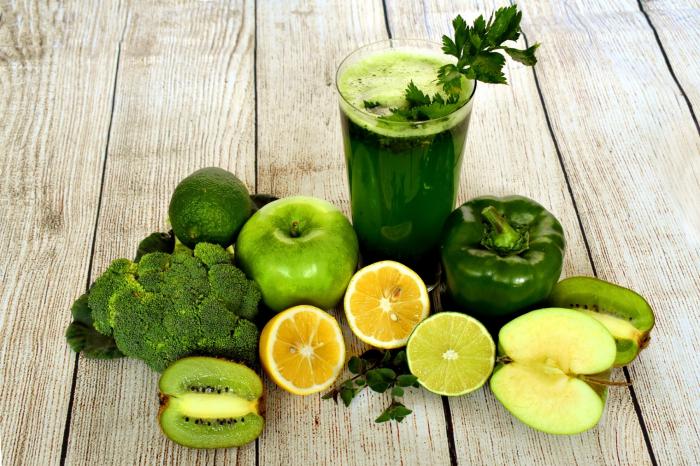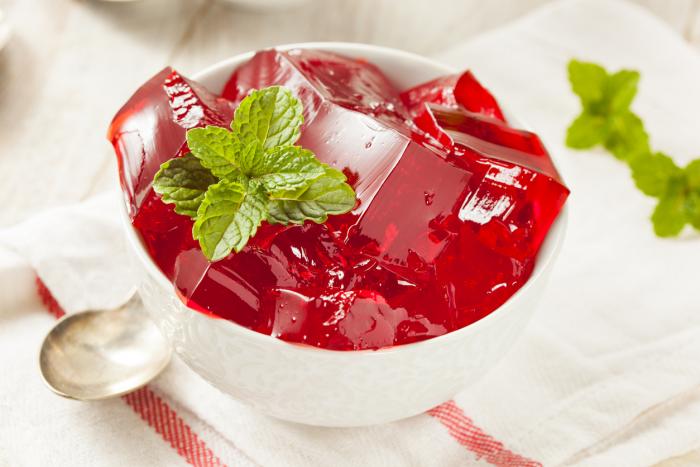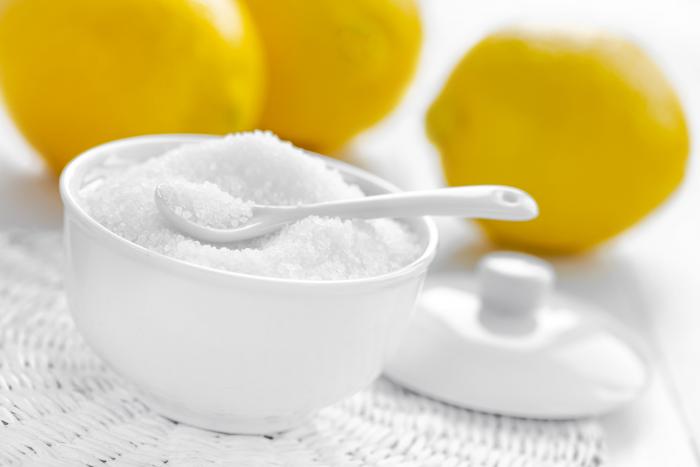Table of Contents
Do you also happen to buy certain food only because it does not contain any “E numbers”? However, not all additives pose a threat for our health. If you are interested in understanding the additives and what role they play in production of food products, continue reading this article.
What exactly are additives or “E numbers”?
Surely you have already come across the abbreviation “E” in combination with a number of three or four digits on the cover of any common food. It is a label for additional substances, or additives which are added to food in order to extend its durability, or enhance the colour and taste of the product. [1] Many nutrition “specialists” claim that additional substances labelled as “E” in food are harmful. But is it truly so?
All food on the market has to go through a strict control by the EFSA (European Food Safety Authority), so it is impossible for any kind of harmful and dangerous product to show up on the market. EFSA controls the proportion of the chemical substances in food which cannot exceed the permitted level of ADI, that is the Acceptable Daily Intake. The amount of ADI says what substance and how much of it we can take without being exposed to any health risk. [2] [3]
According to European legislation, the additives can be used in the products only in case they meet the permissions based on three criteria:
- food additive does not pose a risk of danger for the consumer’s health
- use of such substance is technologically necessary
- consumer is not deceived by the use of the food additives [2] [23]
What types of “E numbers” do we know?
Based on their origin, the additives can be divided into three basic categories:
- Natural – additional substances from natural sources created without any chemical process
- Synthetic – these substances do not occur in nature, so they need to be made in laboratories
- Nature identical – they are produced artificially, but their composition is identical to the natural additives
Natural substances can be divided into individual categories based on their functions as follows:
- E100 – E199 (color additives)
- E200 – E299 (preservatives)
- E300 – E399 (antioxidants, acidity regulators)
- E400 – E499 (thickeners, stabilisers, emulsifiers)
- E500 – E599 (acidity regulators)
- E600 – E699 (flavor enhancers)
- E900 – E999 (additional sweeteners)
- E1000 – E1599 (additional additives) [3]
Additives E100 – E199 (color additives)
Additives numbered from 100 to 199 stand for color additives. However terribly it may sound that there are some artificial colors added to our food to make it more eye catching, there are some natural coloring agents included in this group as well. [4] [22]
E100 stands for a coloring agent called curcumin, which is made from the root of a curcuma plant and is used in production of margarine, cheese and fish fingers. E101 stands for riboflavin, also called vitamin B2, which can be commonly found in eggs or green vegetables. Vitamin B2 helps to break down proteins, fats, and carbohydrates. It plays a crucial role in maintaining the supply of energy to human body and it is used in production of cheese and margarine. [5]
E150a stands for a coloring agent called caramel. This dark brown color derived from sucrose is added to non-alcoholic beverages, beer and whiskey. [6] E120 or carmine is a red coloring agent, which is acquired from crushed fertilised female beetles named Dactylopius coccus Costa. Therefore, it is a biological coloring agent. [7]

Additives E200 – E299 (preservatives)
It is no secret that the salami you buy in a supermarket can sustain about a month without getting spoiled. Behind this are exactly the preservatives, which can keep the food fresh for a longer period of time. As in the case of coloring agents, this fact can also frighten you away from consuming such products. Normally, the organic products have a limited endurance which expires after a certain period of time. [4] [22]
Some of the preservatives used in food products contain potassium nitrite (E249) which is often used to protect food, such as ham, tinned meat and bread. [8] The increased intake of potassium is crucial for reducing the risk of cardiovascular diseases.
E290, that is carbon dioxide, is colorless gas which can be found naturally in the Earth’s atmosphere as a trace element. Among typical products that contain carbon dioxide are for example wine, non-alcoholic beverages and sweets. [9]
Fumaric acid (E297) comes from plants of the genus Fumaria and it can be used to flavor, acidify and enhance the taste of non-alcoholic beverages. Fumaric acid is commonly produced in a body of each living being while being directly exposed to the Sun. [10]

You might be interested in these products:
Additives E300 – E399 (antioxidants, acidity regulators)
Antioxidants play a crucial role in extending the shelf life of products and in enhancing the taste and appearance of food. Moreover, they help decreasing the process known as compound lightly browning which is a process during which the color of fruits and vegetables turns brown after certain time. [4] [22]
An example of a natural antioxidant is ascorbic acid (E300) which is in fact vitamin C. It regulates the acidity and alkalinity of food and prevents the growth of bacteria, yeasts and moulds. That’s why it is also used as a preservative and it is mainly used in production of wine, non-alcoholic beverages, jams and other foodstuffs. [12] Regarding the synthetic antioxidants, as traditional examples can be mentioned gallates E310, E311 a E312. [11]
Acidity regulators are used to control alkaline or acid levels in food which guarantees more pleasant taste of the acid food. Among them is for example citric acid (E330), which is a weak organic acid existing naturally in citrus fruits. [12] Lecithis (E322) can be commonly found in egg yolks and it is a part of fatty acids in a body of each living organism. It also helps securing a proper cell function and maintaining a healthy level of cholesterol. [13]

Additives E400 – E499 (thickeners, stabilizers and emulsifiers)
Thickeners add volume to the products and improve their structure and appearance. The reason why emulsifiers are added to food products is so they can help mix together components which are not normally combined together. A good example is water and oil. On the other hand, stabilizers make sure that the components already combined with the help of emulsifiers do not split. A typical example is a jelly which contains components of a thickener, an emulsifier and also a stabilizer in one. [4] [22]
Another example is additive E406, that is agar. It comes from a natural source of seaweed and it is used as a thickener, a gelling agent and a stabilizer in one. [14] Calcium alginate (E404) is a thickener derived also from the seaweed and it is added to the pudding mixtures, flavored milk or cream. [15]
Glycerol (E422) is an oily colorless alcohol which is derived by decomposition of natural fats with alkalis and it is used in dried fruit, liqueurs and vodka. It has been shown that glycerol can serve as a protection against damaging the DNA, ultraviolet light and radiation. [16]

Additives E500 – E599 (acidity regulators)
Acidity regulators have been used in the food industry for a long time and their main purpose is to adjust the taste of the products. Moreover, the acidic environment in food prevents from formation of many microorganisms. Some of the acidity regulators can be found also in the group of additives labelled as E300 – E399. [4] [22]
E500 stands for sodium carbonate which occurs also in wild nature, for example in salt lakes and in sea water. Sodium carbonate has the ability to bind the unwanted metal ions which can prevent from any changes of color, structure or food yellowing. It is used in production of bread, pastry, raising agents and beverages. [4]
E530 is magnesium oxide and it serves to adjust the pH of the products. It is a great source of magnesium, which among other things secures also the healthy functioning of the circulatory and nervous system. It serves as a neutralizer for some frozen products and butter. [17]

Additives E600 – E699 (flavor enhancers)
The aroma enhancers in food improve already existing flavor of products. The most popular flavor enhancer is a common table salt. Its use is so frequent that it is not normally classified as a food additive, therefore it does not belong to the additives. [4] [22]
Besides salt and common spices, such as black pepper or red pepper are in this group of additives included mainly synthetic substances. An example of such is zinc acetate with its number E650 which is harmless in small doses and is used to enhance the bitter taste of coffee and grapefruit. One study has confirmed its positive effects in treating a cold. [18]

Additives E900 – E999
Some of the food additives cannot be easily classified into any of the above mentioned categories. There are two possible reasons for this – either they do not meet any of the criteria for classification or they can play multiple roles and thus their classification would not be clear. [4] [22]
An example of such is beeswax, labelled as E901. It is a product which commonly occurs in nature and it is made by combination of honey and pollen. It adds a glare to the products, therefore it can be found not only in cosmetics, but also in some confectionery products used for making icing. [19] The ability of food to glance is provided also by shellac (E904) which comes from resin produced by insect called Laccifer lacca. It is used in production of confectionery, but it can be also made into a pill coating. [20]
Additive E955 stands for sucralose, an artificial sweetener which is 600 times sweeter than sugar. It is a synthetic substance which does not pose any threat for human health providing that the permitted dosage is kept. You can read more about sucralose in our article Sucralose – artificial sweetener and its impact on our health.
Into this category of additives belongs also Xylitol (E976), which is mainly used as an alternative sweetener. It is purely an organic extract of breech, which is 200 times sweeter than sugar, but it contains much less calories, therefore it is used in many fitness products. Besides this function can Xylitol serve also as a stabilizer and damper, therefore it cannot be easily assigned into one specific category. [21]
There is a wide range of natural additives, which have beneficial impact on our health, although they are labelled as “E numbers”. That’s why it is a nonsense not to buy a product only because it contains some additives. If any of the additives posed provable threat for our health, their occurrence in food products and other goods would be banned.
The most common organic “E numbers”
In the table below, you may find the most commonly used organic “E numbers”, which do not pose any health risk, but conversely, they can even have benecitial impacts on our body.
| Riboflavin | E101 | colorant | supports immunity, metabolizes fats and proteins | flour, cereals |
| Beta-carotene | E160a | natural colorant and antioxidant | Vitamin A – improves sight, provides nutrients to teeth and nails | butter, confectionery, beverages |
| Betanin | E162 | natural colorant | suppresses fatigue, supports immunity | beverages, yoghurts, ice-cream, candy |
| Fumaric acid | E297 | preservative | natural antioxidant | fillings, sauces, jelly |
| Lecithin | E322 | antioxidant | prevents separating water from oil, commonly found in eggs | baking ingredients, chocolate |
| Citric acid | E330 | acidity regulator | prevents yeast infections | frozen products, yoghurts, mayonnaise |
| Agar | E406 | natural stabiliser | supports reproduction of probiotics | bakery products, creams |
| Cellulose | E460 | thickener | basic building unit of plant cell walls, great fiber source | bread, grated cheese, sauces |
Why are people afraid of “E numbers”?
The topic of food additives and their adverse effects is very controversial. Various sources claim that “E numbers” in food products are dangerous and they harm our health. They support their claims mainly with the synthetically produced substances, such as controversial aspartame or sodium glutamate. However, these are permitted in the European Union states and they do not pose any safety risk to humans providing that the optimal daily intake is kept. And what is more, Aspartame contains Phenylalanine which is a natural amino acid. [24] You can read more about Aspartame in our article Artificial sweeteners – myths and facts about their safety and impacts on your health.
Sodium glutamate or MSG, labelled as E621, is one of the most common flavor enhancers and many people consider it one of the worst additives on the market. They are afraid of the side affects connected with its use, such as nausea, asthma and headache. However, no studies have ever proven that these problems would appear in case the person was taking only the maximum daily intake of MSG permitted. [25] Therefore, the fact that some food additives are made synthetically does not mean that they are dangerous and we should avoid them.
What frightens people the most about the side effects of the artificial sweeteners, color additives and preservatives is the child hyperactivity. The Food and Drug Administration, FDA, and also many other scientific studies have proven that the food additives do not cause ADHD/hyperactivity in children. [26]

We believe that thanks to our article you found out all the necessary information about the “E numbers”, their occurrence and necessity of use. If you liked this article, we will be very thankful if you could support it with like and share among your friends.
[1] Food additives – https://www.who.int/news-room/fact-sheets/detail/food-additives
[2] Food additives - Introduction – https://www.efsa.europa.eu/en/topics/topic/food-additives
[3] Paul Singh, Michael Davidson - Food additive – https://www.britannica.com/topic/food-additive
[4] E-Numbers & Food Additives – http://duncanlock.net/pages/e-numbers-food-additives.html#e100-e199
[5] Yvette Brazier -Benefits and sources of vitamin B2 – https://www.medicalnewstoday.com/articles/219561.php
[6] Garima Sengar, Harish Kumar Sharma - Food caramels: a review – https://www.ncbi.nlm.nih.gov/pmc/articles/PMC4152495/
[7] Alghamdi AH, Alshammery HM, Abdalla MA, Alghamdi AF -Determination of carmine food dye (E120) in foodstuffs by stripping voltammetry. – https://www.ncbi.nlm.nih.gov/pubmed/19916383
[8] Food Safety Authority of ireland - Use and Removal of Nitrite in Meat Products – https://www.fsai.ie/faq/use_and_removal_of_nitrite.html
[9] Shivani Patel; Sapan H. Majmundar. - Physiology, Carbon Dioxide Retention – https://www.ncbi.nlm.nih.gov/books/NBK482456/
[10] Rostami Yazdi M, Mrowietz U - Fumaric acid esters. – https://www.ncbi.nlm.nih.gov/pubmed/18755371
[11] Michele Varvara, Giancarlo Bozzo, Giuseppe Celano, Chiara Disanto, Cosimo Nicola Pagliarone and Gaetano Vitale - The Use of Ascorbic Acid as a Food Additive: Technical-Legal Issues – https://www.ncbi.nlm.nih.gov/pmc/articles/PMC5076701/
[12] Iliana E. Sweis and Bryan C. Cressey - Potential role of the common food additive manufactured citric acid in eliciting significant inflammatory reactions contributing to serious disease states: A series of four case reports – https://www.ncbi.nlm.nih.gov/pmc/articles/PMC6097542/
[13] Canty DJ, Zeisel SH - Lecithin and choline in human health and disease. – https://www.ncbi.nlm.nih.gov/pubmed/7816350
[14] Paul Cherry, Cathal O’Hara, Pamela J Magee, Emeir M McSorley and Philip J Allsopp - Risks and benefits of consuming edible seaweeds – https://www.ncbi.nlm.nih.gov/pmc/articles/PMC6551690/
[15] Tugce Senturk Parreidt, Kajetan Müller and Markus Schmid - Alginate-Based Edible Films and Coatings for Food Packaging Applications – https://www.ncbi.nlm.nih.gov/pmc/articles/PMC6211027/
[16] Nutrients review - Glycerin (Glycerol) – http://www.nutrientsreview.com/carbs/edible-glycerin.html
[17] Thomas O. Carpenter, Maria C. DeLucia, Jane Hongyuan Zhang, Gina Bejnerowicz, Lisa Tartamella, James Dziura, Kitt Falk Petersen, Douglas Befroy, and Dorothy Cohen - A Randomized Controlled Study of Effects of Dietary Magnesium Oxide Supplementation on Bone Mineral Content in Healthy Girls – https://www.ncbi.nlm.nih.gov/pmc/articles/PMC2995550/
[18] Turner RB1, Cetnarowski WE - Effect of treatment with zinc gluconate or zinc acetate on experimental and natural colds. – https://www.ncbi.nlm.nih.gov/pubmed/11073753
[19] Fratini F, Cilia G, Turchi B, Felicioli A -Beeswax: A minireview of its antimicrobial activity and its application in medicine. – https://www.ncbi.nlm.nih.gov/pubmed/27633295
[20] Dong Chen, Chun-Xia Zhao, Camille Lagoin, Mingtan Hai, Laura R. Arriaga, Stephan Koehler, Alireza Abbaspourrad and David A. Weitz - Dispersing hydrophobic natural colourant β-carotene in shellac particles for enhanced stability and tunable colour – https://www.ncbi.nlm.nih.gov/pmc/articles/PMC5750000/
[21] Ur-Rehman S1, Mushtaq Z, Zahoor T, Jamil A, Murtaza MA - Xylitol: a review on bioproduction, application, health benefits, and related safety issues. – https://www.ncbi.nlm.nih.gov/pubmed/24915309
[22] Explore numbers - Food additives – https://exploreenumbers.blogspot.com/
[23] Komisia európskych spoločenstiev - Správa komisie euróspkemu parlamentu a rade – https://www.svps.sk/dokumenty/potraviny/SEKPR.pdf
[24] Michael E J Lean - Aspartame and its effects on health – https://www.ncbi.nlm.nih.gov/pmc/articles/PMC520987/
[25] Michael Lee, MD - MSG: Can an amino acid really be harmful? – https://www.clinicalcorrelations.org/2014/04/30/msg-can-an-amino-acid-really-be-harmful/
[26] David C. Agerter, M.D - ADHD diet: Do food additives cause hyperactivity? – https://www.mayoclinic.org/diseases-conditions/adhd/expert-answers/adhd/faq-20058203

